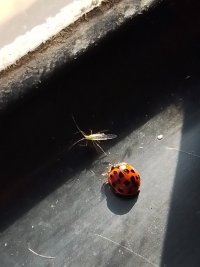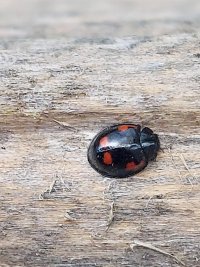gentlegreen
I hummus, therefore I am ...
There was a report a while back of a ladybird trapped in the park noticeboard and sadly I never plucked up the courage to take a hex key and release it.
Sadly there were several dead ones (small, yellow) in there today
Sadly there were several dead ones (small, yellow) in there today








 .
.




